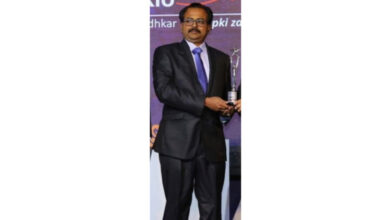Strategic Employer Positioning for Mid-Career Workers: A Win-Win Approach

By Dr Reshmi, Assistant Professor, Dept of Management, Paari School of Business
The modern workplace is undergoing rapid transformations, influenced by technological advancements, shifting demographic trends, and evolving employee expectations. Among these changes, one critical segment of the workforce that companies need to focus on is mid-career workers. These individuals, typically between the ages of 35 to 50, are at a pivotal point in their careers, often bringing a wealth of experience, developed skills, and leadership potential. However, as their professional priorities evolve, attracting and retaining them requires a distinct employer positioning strategy.
Traditionally, recruiting young employees has always been a ritual in contemporary organizations. This approach keeps the workforce young by maintaining average employee age within age threshold and support the bottom line by saving on compensation. Yet, certain task and roles require skill, experience, and expertise, compelling organizations to hire seasoned professionals. Meanwhile, the current outlook of job market does not present a very enthusiastic picture. Layoffs and other factors like emergence of AI, rapid technological advancement, geopolitical concerns have adversely affected the job market, making organizations less adaptable to the needs of this demographic.
Unfortunately, these trends are not new. Employers have long displayed a certain degree of cynicism towards mid-career workers. Finding the right job is not easy for this group, as job opportunities with flexibilities and benefits, as they need at this stage of life are not very encouraging. Additionally, workplace age discrimination remains a significant barrier in the hiring process.
However, considering the efforts on attracting and retaining talented workforce, organizations must reassess the factors that hinder the hiring prospects of mid-career workers and level the playing field. These actions will not only reflect respect but also signal a genuine commitment to this demographic. A human resources strategy that affirms the value of mid-career workers not only supports organizational goals but also reflects a commitment to building a diverse and inclusive workforce.
Recruiters’ efforts to find the right talent would also be eased if mid-career workers were given adequate opportunities in the job market. Effective employer positioning can help organizations tap into the vast experience mid-career professionals have gained during their prime working years, creating a mutually beneficial situation for both. The global workforce includes individuals from all generations, where the mid-career segment is continually growing. While the current mid-career workers’ pool consists primarily of Generation X, millennials will soon join this group, followed by Generation Z in the coming years. Therefore, it is crucial for employers to adopt practices that embrace all qualified candidates, regardless of age, to build a dynamic and inclusive workforce.
Positioning the recruitment strategy for mid-career workers can also yield benefits for organizations. Middle-aged employees often exhibit resilience and discipline, contribute to conflict resolution, and handle social and interpersonal issues more effectively. They generally show higher work engagement and a stronger psychological contract with their employers. Embracing mid-career employees can enhance the employer’s image and reinforce its brand in terms of workplace diversity. While concerns about compensation costs exist, these can be mitigated by lower turnover rates and reduced training expenses, as mid-career workers often require less training compared to entry-level employees. However, mid-career worker works must show enthusiasm to learn new skills and technology and participate in all training and development programmes to keep themselves updated. Both mid-career workers and employers need to embrace change.
Additionally, it is also worth positioning the recruitment strategy for mid-career workers by clearly communicating the compensation and benefits offered. Health insurance, for example, is highly valued by mid-career workers and can be instrumental in attracting this talent. Providing networking groups for mid-career employees can also facilitate the sharing of their valuable experience.
Mid-career professionals bring years of experience from different organizations, each with its unique culture, norms, and ways of working. As a result, integrating them into a new company culture can be a challenge. If the organization’s culture is significantly different from what mid-career hires are accustomed to, they may struggle to fit in, leading to issues with collaboration, communication, and overall job satisfaction.
Moreover, mid-career professionals may have their own expectations regarding leadership, decision-making processes, and innovation, which may not always align with the organization’s existing structure. If there is a mismatch between the professional’s values and the company’s culture, it can result in disengagement, reduced productivity, and even turnover.
To address these issues, companies should assess cultural fit as carefully as they do skills and experience. This can be achieved through behavioral interviews, personality assessments, and by providing candidates with a clear understanding of the company’s values, mission, and work environment. Additionally, offering a structured onboarding process that emphasizes team integration and cultural alignment can help new hires adapt more smoothly to their new roles.
A key component of employer positioning for mid-career workers is emphasizing growth opportunities within the organization. Mid-career professionals often seek roles that offer clear pathways for advancement, whether through promotions, leadership opportunities, or lateral moves that allow for skill development in new areas. Positioning the company as a place where experienced professionals can continue to grow and develop is essential. This can be achieved by promoting success stories of employees who have grown into senior roles or expanded their skill sets through internal programs. Providing testimonials, case studies, or interviews with mid-career employees who have advanced within the organization is a powerful way to illustrate these opportunities.
Mid-career workers are often at a stage where they seek opportunities for professional growth and leadership. They may be less interested in entry-level training programs and more focused on roles that allow them to leverage their experience while continuing to develop new skills. At this stage in their careers, they are typically looking for positions that will help them move into leadership or executive roles. Offering opportunities for leadership, mentorship, or advanced training programs is essential for employers targeting this demographic. If a company cannot provide a clear path for growth or if the position seems like a lateral move without opportunities for advancement, mid-career candidates may be hesitant to join. To attract and retain mid-career professionals, organizations should be transparent about career progression and offer opportunities for leadership development, such as formal training programs, mentorship opportunities, or the possibility of taking on more significant responsibilities over time. Additionally, providing regular feedback and discussing long-term goals can help ensure that mid-career professionals feel valued and see a future within the organization.
Further, climbing the corporate ladder may not be the sole focus of mid-career workers. Some may seek lateral moves that allow them to explore different areas of the business or develop new skills. Offering flexible career pathways that allow for such movement within the organization can help retain mid-career talent who might otherwise look for opportunities elsewhere.
However, absorbing mid-career workers in organization is not easy, as one of the primary challenges in hiring mid-career professionals is the issue of skill mismatch. These individuals have often spent a considerable portion of their careers developing expertise in specific fields, which may or may not align with the current needs of the organization. In rapidly evolving industries, particularly those driven by technology, companies may require candidates who possess more up-to-date skills, especially in areas like digital tools, data analytics, or new technologies. On the other hand, mid-career professionals may have developed highly specialized skills that are no longer as relevant or in demand.
Furthermore, the problem of overqualification also arises frequently. Hiring managers may hesitate to hire someone with more experience than what is required for a role because they fear the candidate will become bored, dissatisfied, or seek higher-level opportunities elsewhere. Overqualification can also result in concerns about managing mid-career hires who may expect more responsibility or autonomy than the role offers, potentially leading to tension between the hire and their supervisors.
To address these challenges, companies should be clear about their expectations and needs when crafting job descriptions. Rather than focusing on traditional role requirements, recruiters should emphasize transferable skills, adaptability, and willingness to learn. Additionally, offering training programs or upskilling opportunities can help mid-career professionals bridge any skills gaps. Open communication during the hiring process about growth opportunities and career progression within the organization can also help alleviate concerns related to overqualification.
Though, the above challenges can be streamlined with the help of effective reinforcement of recruitment process, but employers need to tackle a perception-based challenge which is the perception of age discrimination, particularly in industries that are seen as being driven by younger workers. Mid-career professionals may worry that they are being overlooked in favor of younger talent. Employers must take steps to counteract this perception by promoting a diverse and inclusive workforce, where employees of all ages are valued. Implementing age-diverse hiring practices and showcasing a range of employee ages in marketing materials can help combat this challenge. Ensuring that job opportunities and leadership positions are open to workers of all age groups is crucial.
Positioning as employer of choice is a challenging task, but through targeted employer branding, competitive compensation packages, opportunities for growth, and inclusive cultures, organizations can successfully position themselves to meet the expectations of mid-career workers and secure their place as an employer of choice.






